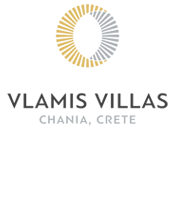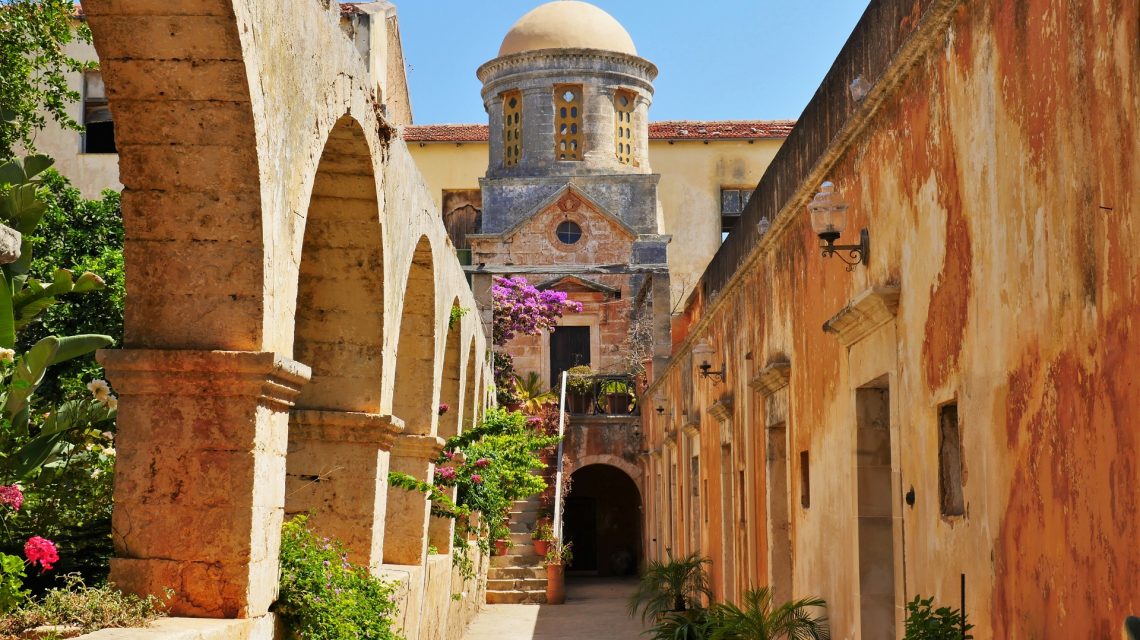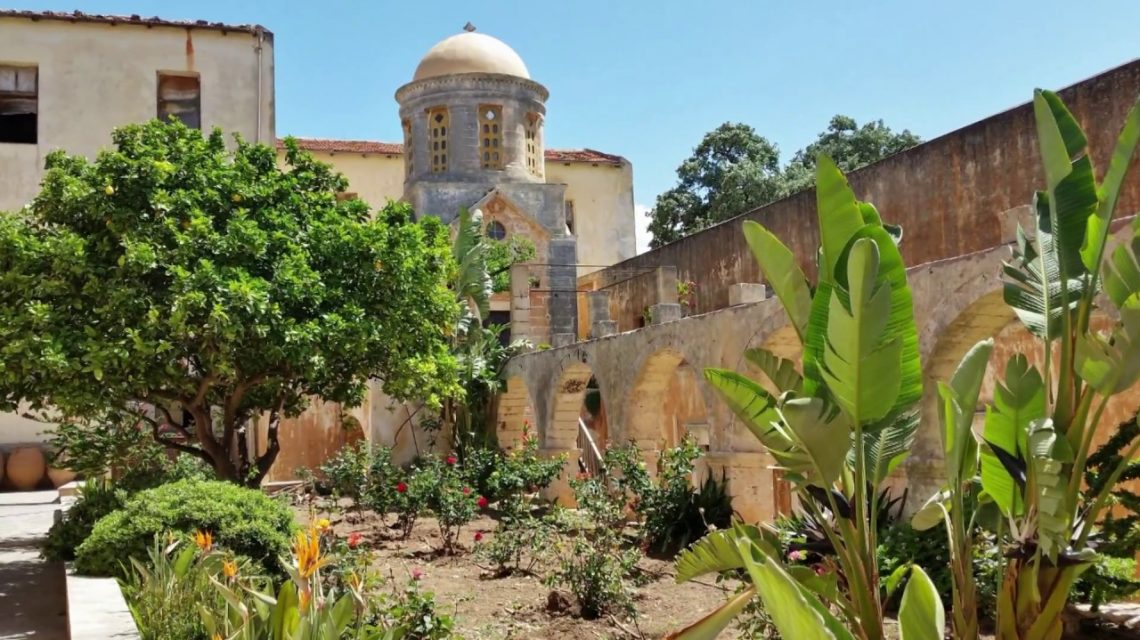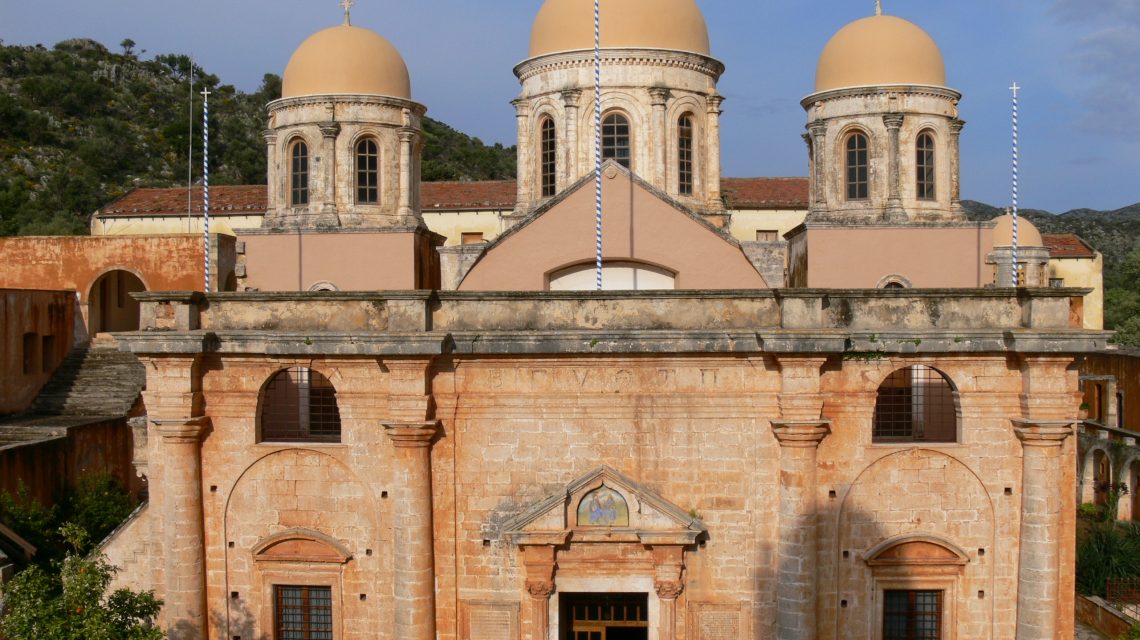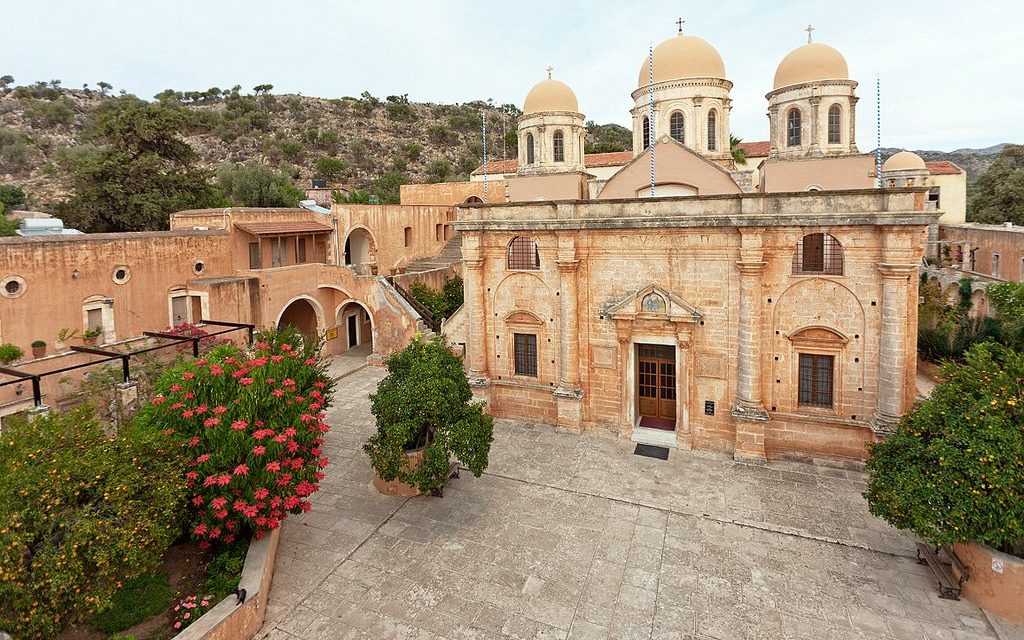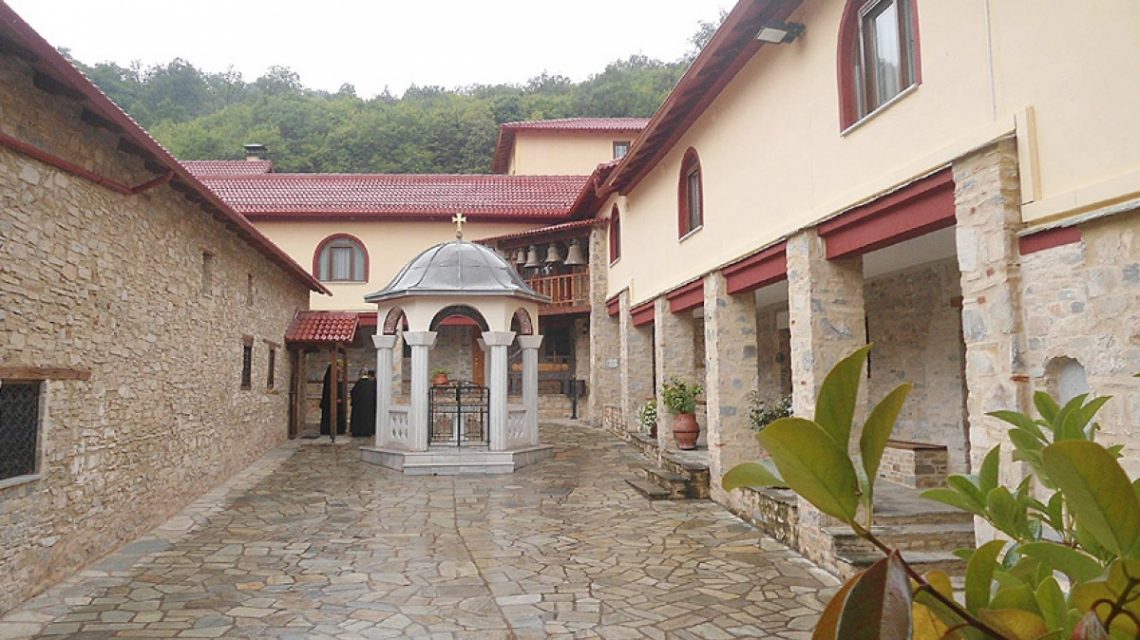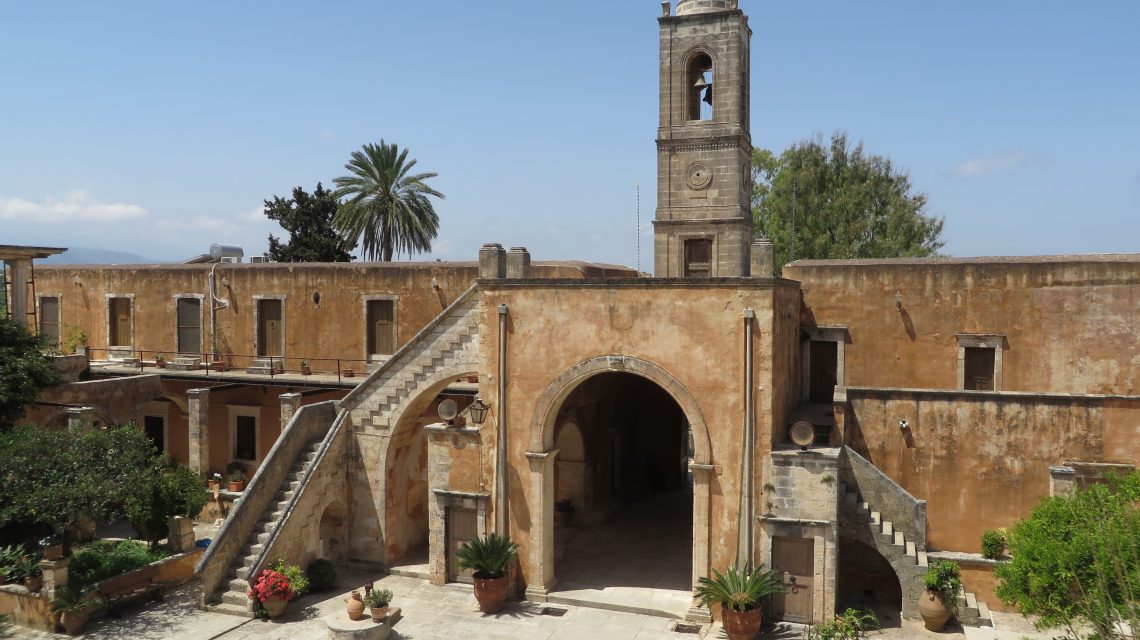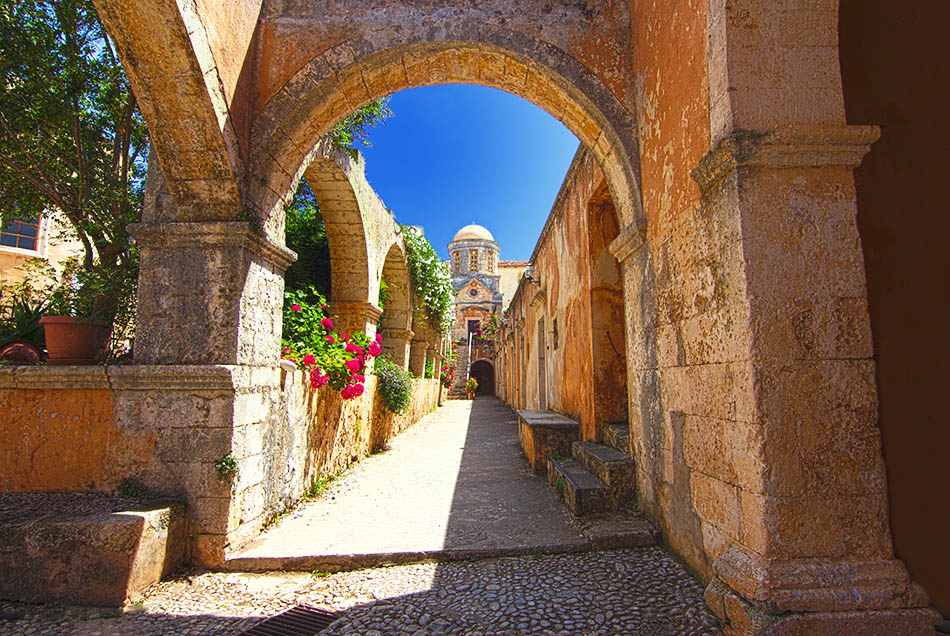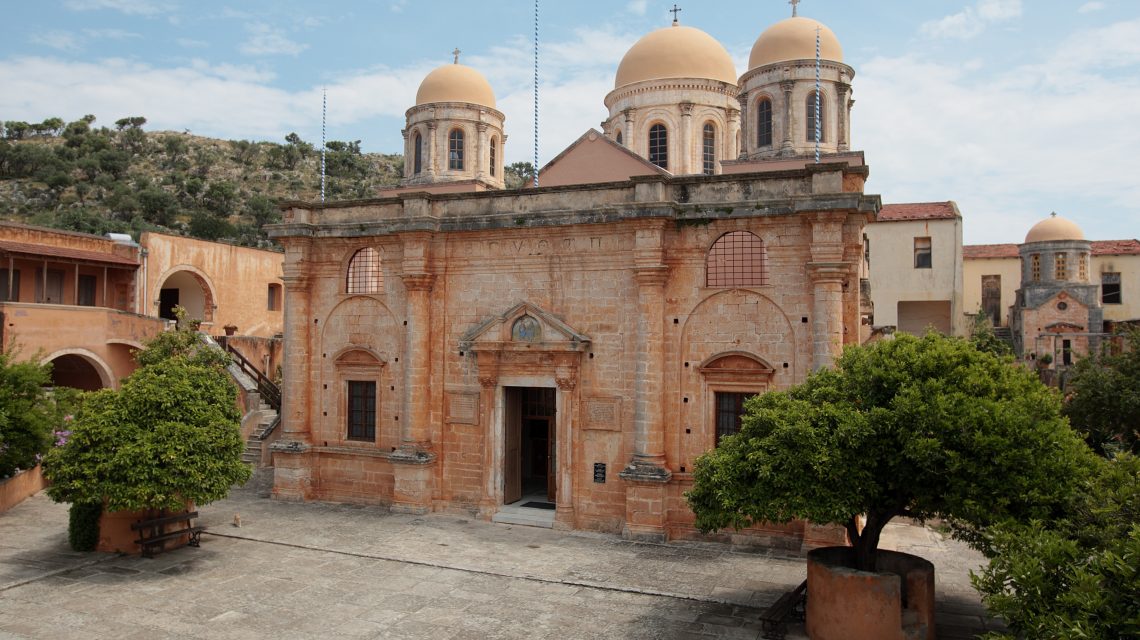History of the Monastery
The Monastery of Agia Triada Tzagarolon was built in 1634, on the site of a small church dedicated to the Holy Apostles. The monks Lavrentios and Ieremias who built the monastery came from the great Venetocretan Tzagarolos family, which is reported to have exercised great influence on the local Orthodox and Catholic communities.
The two brother monks were highly educated, learned in history, Greek and Latin, and also architecture. In fact it was Ieremias who designed and built the church, influenced by the great 16th-century Veronese architect Sebastiano Serlio. Ieremias undertook the design and building of the new church in 1611, as the existing church was small and abandoned. Ieremias did indeed begin work on the monastery but died before it was completed, so his brother Lavrentios continued his labours.
In 1645, when the Turks invaded Crete, work on Tzagarolon Monastery was interrupted. The Turks called the monastery Selvili Manastir, which means “Monastery of the Cypresses” – presumably because of the cypress drive leading to the monastery.
Later, at the Greek Revolution in 1821, the monks living in the monastery managed to escape, but were forced to leave behind all the historical relics and manuscripts they had collected, which were burnt by the Turks. After the end of the Greek Revolution, the Monastery of Agia Triada was re-established and the building work completed. In the meantime, the monastery had acquired a large fortune and extended its activity to Asia Minor.
Architecture of the Monastery of Agia Triada
Tzagarolon Monastery is a square building complex with the monastery church standing in the centre of the verdant courtyard. As soon as you enter the gate, you will see the wells and stairs adorned with bougainvillea, oleander and other seasonal flowers, adding a lovely accent to the complex. This may be one of the few Cretan monasteries where the inner courtyard is so beautiful and well cared for.
The west wing of the monastery is a three-storey building and includes vaulted storerooms where the wine and olive oil were once kept, while most of the courtyard is taken up by a large cistern which was used to collect rainwater from the surrounding buildings.
Inside the complex there was an olive press and a cellar for the wine produced by the monastery, while on the south side is the monastery library, formerly the Abbot’s Room.
The monastery church
The monastery church, which stands out as soon as you climb the stairs and pass through the great gate, is made of dressed stone in the Venetian style.
The church of Agia Triada (Holy Trinity) is a domed triconch church, an architectural type originating with the monasteries of Mount Athos. The church was completed after the Greek Revolution of 1821, once the Turkish authorities had given permission for the domes to be built in 1830.
Of the original decoration of the church, only the icon screen in the ground-floor chapel remains. The gilded icon screen is beautiful and reveals the skill of the artist who made it, even so many centuries later.
Cretan folk tradition and the Baroque style followed on the island for a long period are evident in the decoration of both church and icon screen. The icons of the latter are attributed to the artist Mercourios from Santorini.
Even if you are not into religious tourism, the Monastery of Agia Triada Tzagarolon is well worth a visit. It is a lovely, peaceful and impressive place, something different for visitors to Crete who want to see the historical monuments of the island.
Organic wine and olive oil from Tzagarolon Monastery
In recent years the Monastery of Agia Triada Tzagarolon has developed the systematic cultivation of organic vines and olives, and produces excellent wine, tsikoudia (raki), olive oil, honey, vinegar and olive oil soap.
The monastery produces 20 tonnes of organic virgin olive oil per year. It has won international prizes and is mainly sold abroad.
The following wines are produced: dry red Cabernet, dry red Fokiano Romeiko, dry red Merlot, dry white Trebiano
Naturally all the products of Agia Triada are available for sale from the monastery shop.
Access
Leave Vlamis Villas gates and start heading towards the airport of Chania. A couple of kilometers before you reach the airport, you will a road sign towards Agia Triada monastery. Follow the signs and a minute drive later, you are there!
Usefull tips
-The monastery is officially open from sunrise up to the sunset.
-A good combination is to visit Gouverneto Monastery as it’s only a few minutes far.

